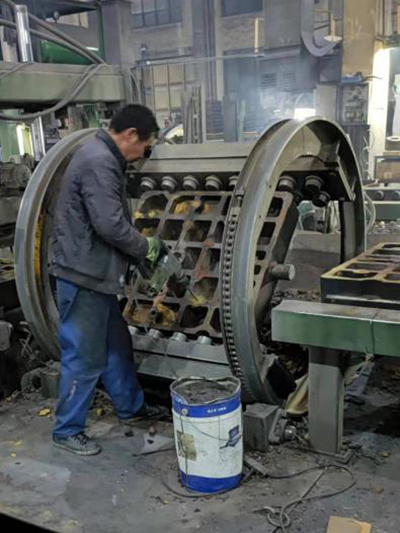Hard Sand Casting An Overview of Its Processes and Applications
Hard sand casting, a technique often used in metalworking, offers numerous advantages for creating intricate metal components. This method involves using a mixture of sand and bonding agents that harden to form a sturdy mold, ensuring the desired shape and precision in the final product. The significance of hard sand casting spans various industries, including automotive, aerospace, and machinery, wherein high-quality metal parts are critical.
The Process of Hard Sand Casting
The hard sand casting process begins with the preparation of the mold. This involves mixing specific types of sand, such as silica sand, with a bonding agent, commonly resin or oil. The mixture is then compacted to create a durable mold that can withstand the pouring of molten metal. The quality of the sand and the binding agents used directly impact the final product's integrity; thus, careful selection is essential.
Once the mold is prepared, it undergoes a curing process, where heat is applied to enhance the hardening of the bonding agents. This step is crucial as it ensures that the mold can withstand the thermal shock and pressure from the molten metal. After curing, the mold is carefully assembled, usually consisting of two halves— the cope (top half) and the drag (bottom half).
The next phase involves pouring molten metal into the mold. The choice of metal may vary depending on the desired components. Commonly used metals include aluminum, iron, and bronze, each offering unique properties suitable for different applications. During pouring, attention must be paid to prevent defects such as air pockets or uneven filling, which can compromise the quality of the casting.
Once the molten metal cools and solidifies, the mold is broken away, revealing the finished component. The casting may then undergo further finishing processes, such as grinding, machining, or polishing. These steps ensure that the final product meets the specific requirements of dimensions, surface finish, and structural integrity.
Advantages of Hard Sand Casting
hard sand casting

One of the primary advantages of hard sand casting is its ability to produce complex geometries with high precision
. The robustness of the sand mold allows for detailed features and tight tolerances, making it ideal for intricate parts used in modern machinery and vehicles. Additionally, the process is highly scalable, accommodating both small runs and large production volumes.Furthermore, hard sand casting can work with various metals, providing versatility in manufacturing applications. The use of this technique often results in lower production costs, especially for high-volume runs, as the molds can be reused multiple times.
Another notable benefit is the suitability of hard sand casting for casting large components, which can be challenging for other methods. This aspect is particularly advantageous in the aerospace and automotive industries, where large structural parts are common.
Applications of Hard Sand Casting
Hard sand casting is widely utilized across multiple sectors. In the automotive industry, it's used to create engine blocks, transmission housings, and various structural components that require strength and durability. The aerospace sector benefits from hard sand casting for producing lightweight but strong components, such as brackets and housings, which are essential for aircraft performance and safety.
Moreover, the machinery and heavy equipment industries rely on hard sand casting for producing large parts that withstand significant stress and wear. This can include components such as gears, frames, and other critical machine parts that benefit from the durability and strength offered by metals processed through hard sand casting.
Conclusion
Hard sand casting remains an indispensable technique in modern manufacturing, enabling the production of intricate and robust metal components. Its versatility, cost-effectiveness, and ability to handle diverse materials make it a preferred choice across various industries. As technology continues to advance, the principles and methods of hard sand casting will likely evolve, further enhancing its applications and efficiencies in the manufacturing landscape.
Post time:Νοέ . 30, 2024 08:46
Next:hiekkaa vasten valimossa
